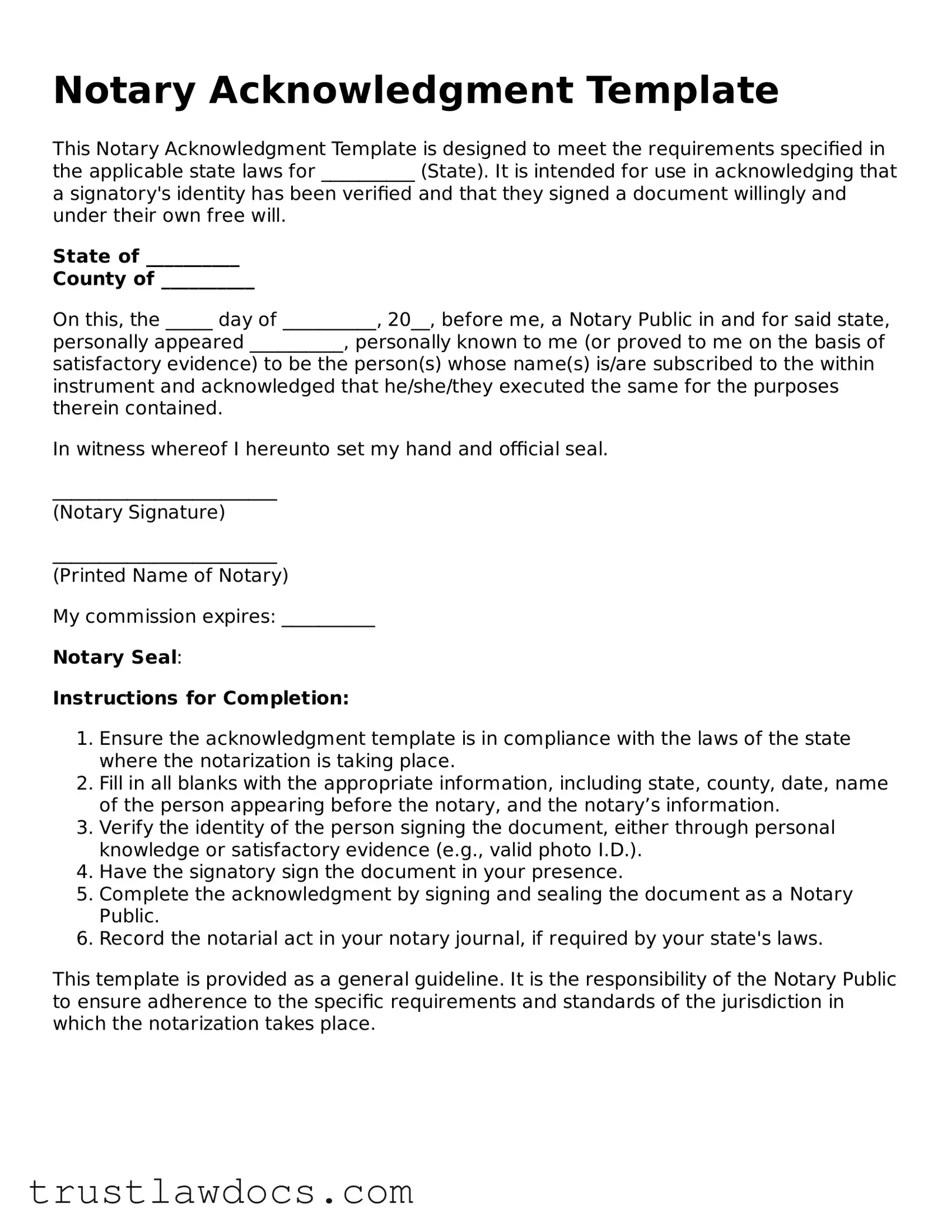What is a Notary Acknowledgment form?
A Notary Acknowledgment form is a legal document used by a Notary Public to confirm the identity of the signer, ensuring that they are signing a document willingly and under their own free will. It is a declaration by the Notary Public that the signer of the document has personally appeared before them, has been identified through satisfactory evidence, and has acknowledged the execution of the document.
Why is a Notary Acknowledgment important?
This form plays a crucial role in the legal process by providing a layer of verification and trust. It helps to prevent fraud and forgery, confirming that the person signing the document is who they claim to be, and that they understand and agree to the document’s terms voluntarily, hence making the document more likely to be upheld in legal settings.
Who can perform a Notary Acknowledgment?
Only a Notary Public, who is an official authorized by the state in which they operate, can perform a Notary Acknowledgment. Notaries Public receive special training and certification to verify identities, witness signings, and deter fraud by ensuring the integrity of the signing process.
What types of documents may require a Notary Acknowledgment?
A wide range of documents may require a Notary Acknowledgment. Common examples include real estate deeds, wills, trusts, power of attorney documents, medical directives, and contracts. Essentially, any document that requires proof of the signer’s identity and willingness to sign may need to be notarized.
How does the Notary Acknowledgment process work?
The process typically involves the signer personally appearing before the Notary Public with the document. The Notary will verify the signer’s identity, usually by checking a government-issued photo ID, and then witness as the signer signs the document. Afterward, the Notary will complete the Acknowledgment form, which may include the Notary’s signature, seal, and the date of notarization, attesting that the identification and signing processes have been satisfactorily completed.
What should I do if I need a Notary Acknowledgment?
If you need a Notary Acknowledgment, you should first ensure that your document is complete, as Notaries Public cannot notarize incomplete documents. Then, you will need to find a Notary, which can often be done at banks, law offices, or through local or state government offices. Make sure to bring a valid, government-issued photo ID when you go to have your document notarized. Additionally, be prepared to sign the document in front of the Notary Public.
